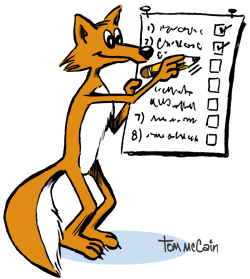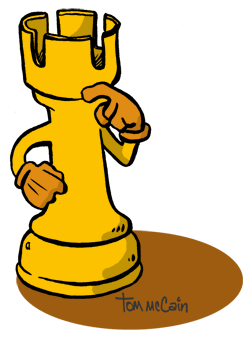 White papers aren’t particularly expensive to create, but that doesn’t mean anyone can just slap one together. They take some careful planning and decision-making to serve as true thought leadership builders. Here’s how to get your white papers off on the right foot.
White papers aren’t particularly expensive to create, but that doesn’t mean anyone can just slap one together. They take some careful planning and decision-making to serve as true thought leadership builders. Here’s how to get your white papers off on the right foot.
Do
- Know your audience and focus on their interests.
- Identify problems and concerns and provide a solution.
- Understand that people with different responsibilities view the same problem differently—accounting vs. sales vs. technical people.
- Think of your audience as a group of investors.
- Attract interest immediately or risk losing the reader.
- Assume that your reader is new to the topic.
- Tell people what you’re going to tell them; tell them; and then tell them what you told them.
- Subtly and carefully craft your own message into the white paper—case studies and customer quotes are a good approach.
- Include an executive summary—many people will only read this portion or read it first.
- Use compelling graphics to reinforce your message—charts, diagrams, illustrations, etc.
- Adopt a conversational style that includes the word “you”—no one wants to read a term paper.
- Let your first draft sit for a few days before you begin editing—you’d be surprised how much a little distance can help.
- Identify key words for Web-hosted white papers before you begin and use them in your white paper.
- Edit, edit and edit again.
Don’t
- Make your white paper self-serving—no one wants to read dull details about your product or service.
- Forget to read a few white papers in your field—you’ll get a quick sense of the good, the bad and the downright ugly.
- Attempt to write the white paper yourself if you don’t have the depth of knowledge or the writing skills.
- Overwhelm your audience with techspeak and acronyms—offer clear definitions when you do use technical terms.
- Get lost in theory and forget to provide real world, supportive examples.
- Neglect to include a brief About Us section at the end—include telephone and email contact information.
- Task technical people with the writing assignment—make them information sources and members of the editing team instead.
- Make the white paper too long (6-10 pages are about right, but they could be as short as 1-2 pages—break longer topics into multiple publications).
- Write a user’s manual if your white paper is addressing a product or technology solution.
- Skimp on the promotional side—use news releases, email, postcards, social media, etc. to promote your latest white paper.
- Shortchange the introduction, conclusion and executive summary.
- Hesitate to use eye-popping color to attract attention and encourage readership.
- Neglect the title or the look and feel of the white paper—they are two of the key drivers of readership.
- Forget to ask yourself what action you want people to take upon reading your white paper.
![]()
White Papers Play Well With E-newsletters. Sending an e-newsletter highlighting your white paper and offering a free download from your website or a landing page is effective. MondoVox Creative Group can write and design both your white paper and newsletter, create a landing page and broadcast the message through our MailVox system. You’ll get all the reporting you need right from your desktop, to say nothing of the benefits of working with an experienced single source.
For more information, email Julia Moran Martz.
![]()
By Larry Bauer
 Creating a successful white paper isn’t just about the content. The content is in fact worthless if:
Creating a successful white paper isn’t just about the content. The content is in fact worthless if: We all want the same thing as marketers: to establish our company as a trusted adviser, so when a prospect is ready to buy, he or she will think of us first. Part of this we accomplish through traditional marketing communications, but integrating thought-leadership content is also essential to reaching our goals.
We all want the same thing as marketers: to establish our company as a trusted adviser, so when a prospect is ready to buy, he or she will think of us first. Part of this we accomplish through traditional marketing communications, but integrating thought-leadership content is also essential to reaching our goals.





